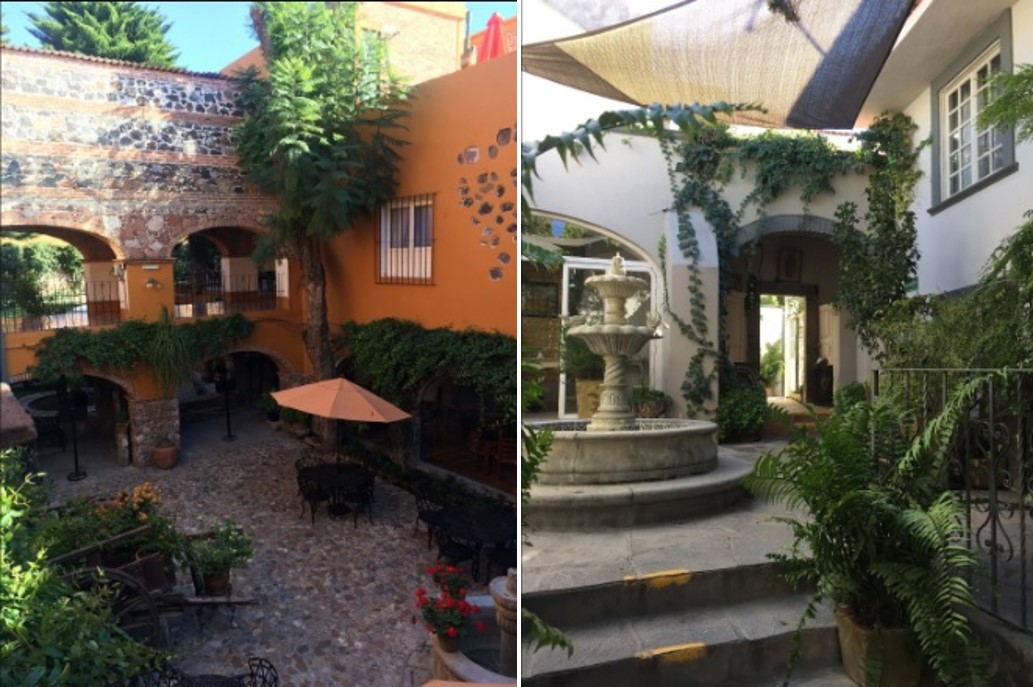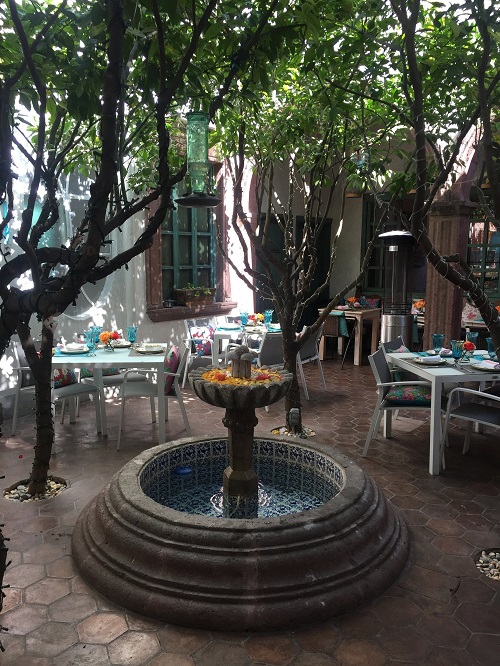SAN MIGUEL DE ALLENDE, Mexico (AP) — Step off the dusty cobblestone streets and peek behind nondescript, weather-worn, faded, even grimy brick facades, and encounter the startlingly beautiful courtyard gardens of this central Mexican colonial town.
These oases of beauty and calm claim their roots in the traditional Moorish gardens of ancient Spain. Those, in turn, were inspired by Persian, Roman and Islamic gardens even earlier. The word “paradise” itself means “walled garden.”
Alfonso Alarcon, a landscape architect in San Miguel de Allende for nearly 30 years, says monasteries were among the first to design and plant courtyard gardens. Perhaps it was an attempt to replicate paradise.
“Life was directed inside” initially for safety reasons, he explained. “No one saw you. It looks like nothing from the outside, and then you get into this beautiful patio.”
Traditionally, such gardens are built in a cross-shape with the corners, usually anchored by large trees, pointing north, south, east and west. A pond or fountain often serves as a central focal point. Fruit trees and fragrant plants provide further respite from the sun, humidity, even the noise and dirt from outside the walls.
In the 16th century, the conquering Spaniards left behind their outdoor sanctuaries, and they continue to be embraced in Mexico today.
Markus Luck has been designing gardens in San Miguel since 2006. “You want something that looks good year-round,” he explains. “Put in things that aren’t too big, don’t block too much light, aren’t too cluttered.”
In smaller spaces, the entire courtyard can even be filled with plants in pots.
Mexican walls are often painted bold reds and yellows and oranges, so trees and plants tend toward simple, wide, leafy greens, or crawling ivy and simple white blooms.
Because of its mild, Mediterranean climate, just about anything can grow — and quickly — in San Miguel.
CLICK HERE FOR FULL ARTICLE ON AP NEWS


